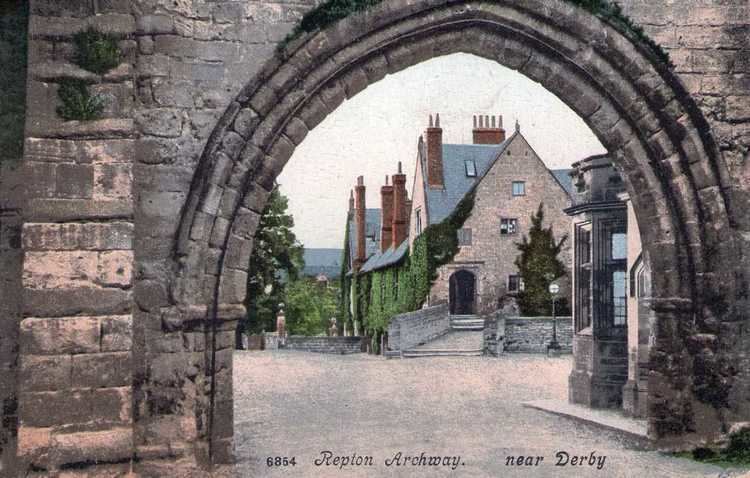Population 2,707 (2001 census) Sovereign state United Kingdom | OS grid reference SK3026 Post town Derby Local time Tuesday 4:46 AM Dialling code 01283 | |
 | ||
Weather 5°C, Wind E at 8 km/h, 97% Humidity | ||
Repton and milton derbyshire villages by car series
Repton is a village and civil parish in the South Derbyshire district of Derbyshire, England, located on the edge of the River Trent floodplain, about 4.5 miles (7 km) north of Swadlincote. The population taken at the 2001 Census was 2,707, increasing to 2,867 at the 2011 Census. Repton is close to the county boundary with neighbouring Staffordshire and about 4.5 miles (7 km) northeast of Burton upon Trent.
Contents
- Repton and milton derbyshire villages by car series
- Map of Repton Derby UK
- Repton historic capital of mercia england 2012 full hd 50p
- History
- Parish church
- Notable residents
- References
Map of Repton, Derby, UK
The village is noted for St Wystan's Church, Repton School and the Anglo-Saxon Repton Abbey and medieval Repton Priory.
Repton historic capital of mercia england 2012 full hd 50p
History
Christianity was reintroduced to the Midlands at Repton, where some of the Mercian royal family under Peada were baptised in AD 653. Soon a double abbey under an Abbess was built.
In 669 the Bishop of Mercia translated his see from Repton to Lichfield. Offa, King of Mercia, seemed to resent his own bishops paying allegiance to the Archbishop of Canterbury in Kent who, while under Offa's control, was not of his own kingdom of Mercia. Offa therefore created his own Archdiocese of Lichfield, which presided over all the bishops from the Humber to the Thames. Repton was thus the forebear of the archdiocese of Lichfield, a third archdiocese of the English church: Lichfield, the other two being Canterbury and York. This lasted for only 16 years, however, before Mercia returned to being under the Archbishopric of Canterbury.
At the centre of the village is the Church of England parish church of Saint Wystan: St. Wystan's Church, Repton. The church is notable for its Anglo-Saxon crypt, which was built in the 8th century AD as a mausoleum for the Mercian royal family. Wystan, or Wigstan, was a prince of Mercia who was murdered by his guardian in 849, in the reign of Wiglaf. His remains were buried in the crypt at Repton and miracles were ascribed to them. Repton proceeded to become a place of pilgrimage; Wigstan was later canonised and became the patron saint of the church.
In 873/4 the Danish Great Heathen Army overwintered at Repton, the only place in England where a winter encampment has been located, identified by a mass grave of some 250 individuals, covered by the kerb stone of its former cairn. The bones were disarticulated, long bones stacked together with skulls on top. Forensic study revealed that the individuals ranged in age from their late teens to about forty, four men to every woman. Five associated pennies fit well with the overwintering date of 873/4. The absence of injury marks suggest that the party had perhaps died from some kind of contagious disease.
Parish church
At the north edge of the village is St Wystan's Church, an Anglo-Saxon church dedicated to the Anglo-Saxon Saint Wystan (or Wigstan) and designated by English Heritage as a Grade I listed building. The 8th-century crypt beneath the church is the burial place to Saint Wigstan, as well as his grandfather, King Wiglaf of Mercia. Also buried there is King Æthelbald of Mercia, under whose reign the building was first constructed, and for whom it was first converted to a mausoleum. Upon the burial of St Wigstan, the crypt became a shrine and place of pilgrimage.
The cruciform Anglo-Saxon church itself has had several additions and restorations throughout its history, including Medieval Gothic north and south aisles in the nave that were rebuilt in the 13th century and widened early in the 14th century, and the addition in 1340 of the west tower and recessed spire. The church was also restored between 1885 and 1886 by Arthur Blomfield.
